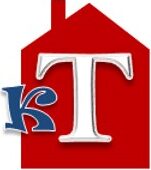Grand Rapids, Michigan, known for its vibrant culture, thriving arts scene, and stunning natural beauty, is experiencing a transformative shift in its rental property market. As the city grows and evolves, several trends are emerging that will shape the future of rental properties in the area. Understanding these trends is essential for both investors and renters as they navigate the changing landscape.
1. Urban Revitalization and Development
The resurgence of Grand Rapids has given rise to urban revitalization initiatives that are transforming formerly underutilized areas into vibrant communities. Neighborhoods such as Monroe North and the West Side are witnessing a boom in new developments, including luxury apartments and mixed-use spaces. This urban redevelopment is attracting a younger demographic, increasing demand for rental properties close to downtown amenities.
Implications for Investors:
Investors are encouraged to explore properties in these revitalized areas, as the demand for rentals in urban centers continues to grow. Properties that offer modern conveniences and easy access to public transit are likely to command higher rents.
2. The Rise of Remote Work
The pandemic catalyzed a major shift towards remote work, a trend that seems here to stay. As employees enjoy greater flexibility, many are reconsidering their living arrangements. Grand Rapids, with its affordability compared to larger cities, is becoming a preferred choice for remote workers seeking a balanced lifestyle. This shift is leading to increased interest in multi-family homes and modest single-family rentals.
Implications for Renters:
For renters, this open choice means opportunities to find more spacious homes as work-from-home settings become a priority. Many are looking for properties with home office spaces and proximity to recreational areas.
3. Sustainability and Eco-Friendly Living
The growing awareness of climate change is pushing both renters and landlords to prioritize sustainability. In Grand Rapids, there is a notable trend toward eco-friendly rental properties equipped with energy-efficient appliances, sustainable building materials, and green spaces. Landlords who invest in making their properties energy-efficient may benefit from lower utility costs and attract eco-conscious renters.
Implications for Investors:
Sustainable properties are not just good for the environment; they can also be more appealing to potential renters and may provide tax incentives. Investors should consider upgrading existing properties with energy efficiency in mind.
4. Technology Integration
Smart home technology is becoming more prevalent in rental properties. Features such as smart thermostats, keyless entry systems, and advanced security monitors are being integrated into new developments. This trend is particularly attractive to tech-savvy millennials and Gen Z renters who prioritize convenience and security in their living spaces.
Implications for Renters:
Renters can look forward to features that enhance their lifestyles and ease their daily activities. Properties with integrated tech options can provide a competitive edge in a crowded rental market.
5. Affordability and Accessibility Challenges
While Grand Rapids remains more affordable than many metropolitan areas, challenges persist. The rising demand for rental properties has led to increased rents, making it difficult for some residents, particularly low to moderate-income families, to find affordable housing. Local governments and non-profits are working to address these issues, emphasizing the need for accessible housing.
Implications for Investors:
Investors should be aware of the ongoing demand for affordable housing options. Incorporating affordable units into new developments or considering properties that cater to budget-conscious renters could be a smart long-term strategy.
6. Community-Centric Developments
There is a growing preference for properties that foster a sense of community. Developments that include shared spaces such as gardens, community rooms, and recreational facilities are attracting interest. Renters are increasingly looking for not just a place to live but a community to be part of.
Implications for Investors:
Developers who focus on creating community-oriented properties will likely see higher occupancy rates and tenant satisfaction. This trend highlights the importance of social interaction and quality of life in residential environments.
Conclusion
As Grand Rapids continues to grow and adapt, the future of rental properties in the city is poised to evolve significantly. Investors, developers, and renters alike must stay informed about these trends to make educated decisions. Embracing urban revitalization, accommodating remote workers, prioritizing sustainability, integrating technology, addressing affordability, and creating community-centric spaces will be key to capitalizing on the dynamic rental market in Grand Rapids. Whether you are looking to invest or find your next home, understanding these trends will provide valuable insights into the future landscape of rental properties in this flourishing city.
What Type of Property are you Looking for?
